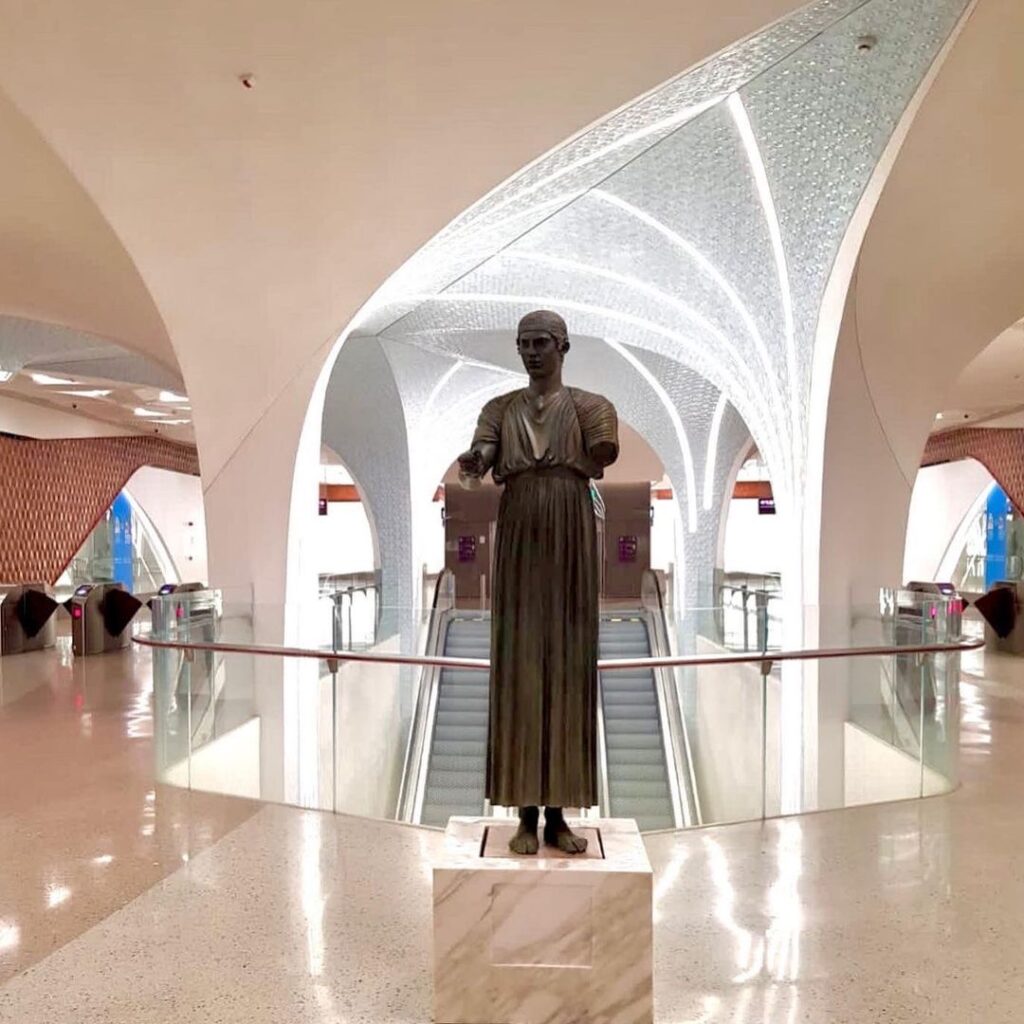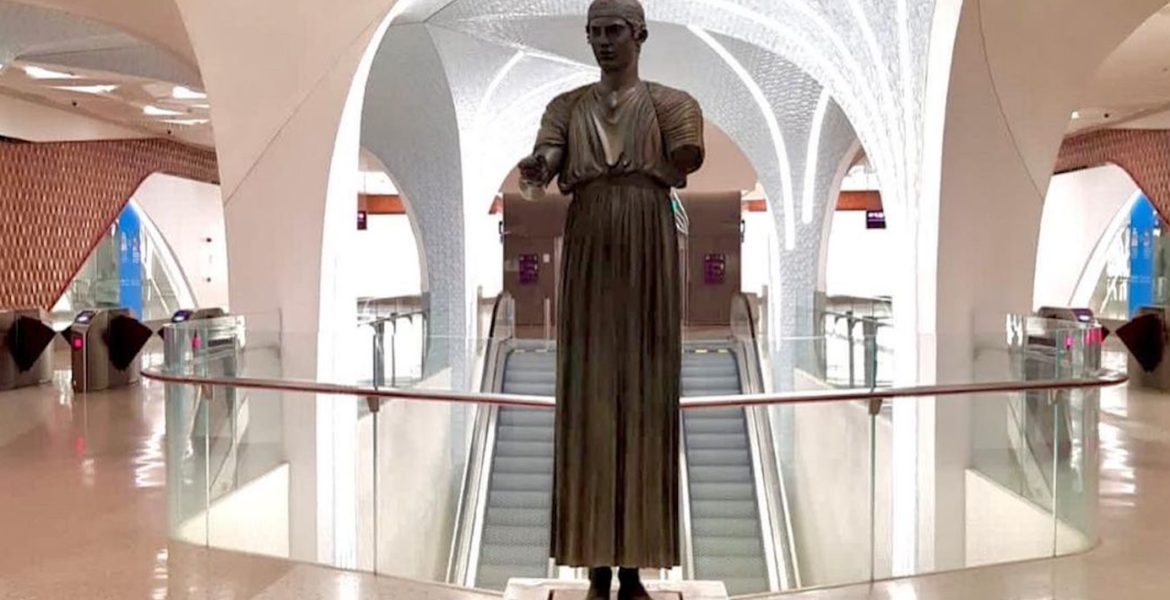
A replica of the Charioteer of Delphi, one of the best-known statues surviving from Ancient Greece, was unveiled at the Metro station at Hamad International Airport (HIA) on Tuesday by Minister of Culture and Sports Lina Mendoni.
The Greek minister spoke of the statue’s discovery by French excavators in 1896, the year the first modern Olympic Games were held in Athens.
“Many centuries later, the Charioteer becomes an ambassador of the friendship between Greece and Qatar,” she said.
She also highlighted the statue’s unique eyes, made of semi-precious stone and glass, providing a very vivid impression.
“We chose to offer the Charioteer to the people of Qatar at a time which marks the strengthening of relations between the two countries.”
Mendoni was then given a personal tour of Qatar’s new National Museum by the Chief Executive Officer of Qatar Museums, Ahmad Al-Namla, showing the country’s history from prehistoric times to the present day.
Greece, Qatar discuss plan on cultural exchange
According to the ministry, a joint work group will be formed to discuss definite and immediate plans, including planning a Greece-Qatar Culture Year.
“We are moving forward in a substantial cooperation, which will have obvious results and an important imprint on the relations between the two countries. The people of Qatar show great interest in Greek Culture, both for our cultural heritage and for contemporary artistic creation,” Mendoni said.
As a first step, Greece will participate in the Doha International Book Fair in January 2022, and Qatar in the Thessaloniki International Book Fair in 2022. Other cultural events highlighting the visiting country will also be planned along the fairs’ sidelines.
In addition, the collaboration of the two countries will include translations of books between the two languages.
Charioteer of Delphi
The Charioteer of Delphi, also known as Heniokhos (Ηνίοχος, the rein-holder), is considered one of the finest examples of ancient bronze sculptures.
The life-size (1.8m) statue of a chariot driver was found in 1896 at the Sanctuary of Apollo in Delphi, It is now on display at the Delphi Archaeological Museum.

